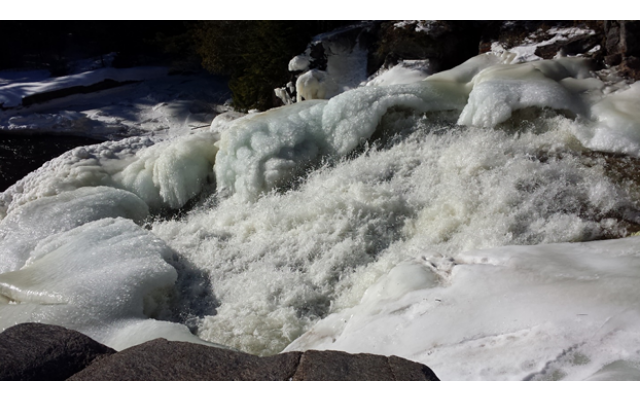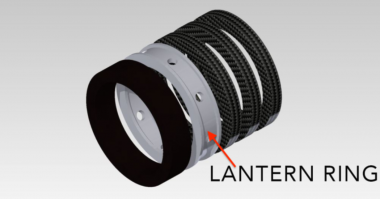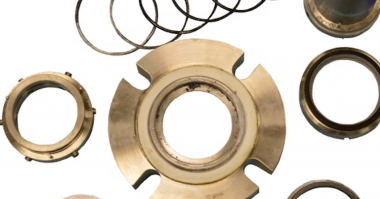Author: Henri Azibert
Of all the fluids that are heated or cooled, compressed or expanded, powering drives or being pumped, the most common one must be water. What may be assumed to be a simple and innocuous fluid to handle does present many challenges to move it around and to keep it contained in its many forms.
We might be thinking of water flowing in a mountain stream; clean, cool, and ‘oh’ so refreshing. While clean, cool water does need to be moved from one place to another in pumping systems, that is the exception rather than the norm.
Maybe because of its abundance, and also because of its thermal conductivity and high specific heat, water is commonly used as a heat transfer fluid. Residential and commercial heating systems circulate water heated in a boiler to the areas where people will comfortably conduct all their activities. This is where some of the idyllic image of water starts to evaporate, figuratively, but also literally.
As water temperature varies, many of its properties change. In pumping systems, the most relevant parameters will be viscosity, density, and phase change.
For dynamic seals, reduced viscosity means reduced lubrication. Near the boiling point, water viscosity is less than a third of what it is at ambient temperature. With reduced lubrication comes increased friction, and therefore more heat generation, sometimes resulting in a phase change. In mechanical seals, phase change can be observed as a puff of steam escaping and separating the seal faces. As the pressure drops from the release of water and steam, the faces now come into sudden contact; the process repeats itself as the cooling/heating cycle continues, resulting in small explosions, which can be just as regular in time intervals as Old Faithful. Eventually, damage to the faces results in a major failure. Referred to as flashing, this phenomenon can be quite destructive, (as a very different version of this practice might be to humans). Keeping the sealed process liquid away from its vapor pressure point through increased pressure or lowering of temperature are keys to preventing damage.
Another version of the phase change can manifest itself as cavitation with its destructive effect on metal parts. As steam bubbles implode, shock waves damage surfaces and generate vibrations. On dynamic seals, the most detrimental effect may be that the seal is running partially dry leading to high wear and rapid failure.
As water temperature changes, so does its density. By the time it approaches the boiling point at atmospheric pressure, it has lost almost 5% of its density. With a temperature increase, the lower density reduces the Net Positive Suction Head available (NPSHa) as well as the Total Discharge Head (TDH). Where are we running on the curve? Are we still within the allowable operating range?
Often, water is drawn from a river to be used throughout a plant for cooling or for the process; in this case temperature is typically not much of concern. However, entrained solids come into play. Sand and silt get into the system, leading to erosion and clogging. Damage will depend on particle size, density, and concentration. Smaller particles will remain in suspension, while larger ones will tend to settle. For seals, the smaller the particles, the more likely the damage, as they might penetrate the seal interface, migrate across the seal faces, and clog the atmospheric side of the seal. Keeping the seal environment clean through external flushes or filtering systems will be essential. And while relatively clean most of the time, river water can become a high concentration slurry after a rain storm.
As we are drawing from natural bodies of water, we should not forget the largest one: sea water. Primarily a concern for the marine industry, it presents its own unique problems. The first one is corrosion, as the high content of dissolved sodium chloride contributes to the damage of materials – particularly, metals. Special alloys, such as duplex stainless or titanium, are required to stand up to the chemical attack. As vapors come across dynamic seals, crystallization occurs on the atmospheric side, clogging components and sometimes resulting in some rather impressive stalactites. Cleaning the outside of the seal with a clean water quench will be helpful. Then, let us not forget the entrained solids, like sand, or the occasional crustaceans.
On a contrasting end is drinking water. The major concern here is to keep contaminants out rather than keeping process fluid in. No harmful material used in all the piping and pumping utilized for bringing the drinking water to kitchens can leach into the stream, as they might be ingested by people. Sometimes the greatest challenge is meandering through the maze of regulations which can vary from jurisdiction to jurisdiction, with innumerable or even sometimes conflicting requirements.
There are many other variations we could consider: ultra-pure water, chilled water, condensate, boiler feed water. Even then, in its gaseous state, it also takes many forms; as wet or dry steam, saturated or superheated steam. Of course, water can quickly bring everything to a grinding halt when it turns to ice. Water, the most essential fluid to life, can be quite challenging to machinery in its many forms.
We need Clean Water and We Clean with Water. How do we do that?


![Durlon Chemap® filters solve filtration tasks in a simpleand economic way [Case Study]](https://test.empoweringpumps.com/wp-content/uploads/2022/12/Durlon-Chemap®-filters-solve-filtration-tasks-in-a-simpleand-economic-way-Case-Study-7-380x199.png)


Comments